Markers of Epidermal Stem Cell Subpopulations in Adult Mammalian Skin
July 2014
in “Cold Spring Harbor Perspectives in Medicine”
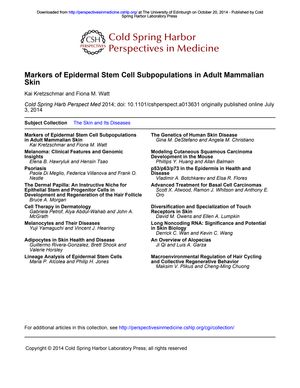
TLDR The document concludes that adult mammalian skin contains multiple stem cell populations with specific markers, important for understanding skin regeneration and related conditions.
The document from 2014 reviews the identification and characterization of epidermal stem cell subpopulations in adult mammalian skin, particularly focusing on murine and human models. It outlines the use of various techniques such as label retention, clonogenic assays, skin reconstitution, and genetic lineage tracing to study these cells. Key findings include the presence of multiple stem cell populations beyond the traditionally recognized bulge area of hair follicles, with markers such as CD34, K15, and SOX-9 being significant for hair follicle stem cells. The document also notes the creation of a new transgenic mouse line for better tracking of bulge stem cell progeny and discusses the challenges in characterizing human hair follicle stem cell markers, which has implications for understanding hair regeneration defects like androgenetic alopecia. Additionally, it highlights the plasticity of epidermal stem cells and their regulation, which is crucial for skin homeostasis, regeneration, and responses to conditions such as cancer, baldness, and aging. However, the behavior of these cells in such skin changes is not fully understood.
View this study on perspectivesinmedicine.cshlp.org →
Cited in this study
research c-MYC-Induced Sebaceous Gland Differentiation Is Controlled by an Androgen Receptor/p53 Axis
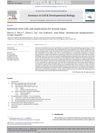
research Epithelial stem cells and implications for wound repair
Different types of stem cells in hair follicles play unique roles in wound healing and hair growth, with some stem cells not originating from existing hair follicles but from non-hair follicle cells. WNT signaling and the Lhx2 factor are key in creating new hair follicles.

research Live imaging of stem cell and progeny behaviour in physiological hair-follicle regeneration
Hair regeneration needs dynamic cell behavior and mesenchyme presence for stem cell activation.
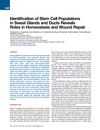
research Identification of Stem Cell Populations in Sweat Glands and Ducts Reveals Roles in Homeostasis and Wound Repair
The study found that sweat glands contain different types of stem cells that help with healing and maintaining healthy skin.

research Reprogramming adult dermis to a neonatal state through epidermal activation of β-catenin
Activating a protein called β-catenin in adult skin can make it behave like young skin, potentially helping with skin aging and hair loss.

research Adipocyte Lineage Cells Contribute to the Skin Stem Cell Niche to Drive Hair Cycling
Fat-related cells are important for initiating hair growth.

research Coordinated Activation of Wnt in Epithelial and Melanocyte Stem Cells Initiates Pigmented Hair Regeneration
Wnt signaling is crucial for pigmented hair regeneration by controlling stem cell activation and differentiation.
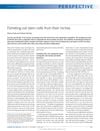
research Ferreting out stem cells from their niches
New methods have greatly improved our understanding of stem cell behavior and roles in the body.

research Bald scalp in men with androgenetic alopecia retains hair follicle stem cells but lacks CD200-rich and CD34-positive hair follicle progenitor cells
Men with baldness due to androgenetic alopecia still have hair stem cells, but lack specific cells needed for hair growth.
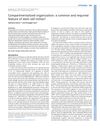
research Compartmentalized organization: a common and required feature of stem cell niches?
Compartmentalized organization might be crucial for stem cells to effectively respond to growth or injury.
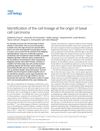
research Identification of the cell lineage at the origin of basal cell carcinoma
Basal cell carcinoma mostly starts from cells in the upper skin layers, not hair follicle stem cells.
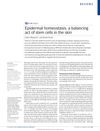
research Epidermal homeostasis: a balancing act of stem cells in the skin
Skin stem cells are crucial for maintaining and repairing the skin and hair, using a complex mix of signals to do so.
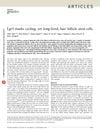
research Lgr5 marks cycling, yet long-lived, hair follicle stem cells
Lgr5 is a marker for active, long-lasting stem cells in mouse hair follicles.
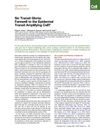
research Sic Transit Gloria: Farewell to the Epidermal Transit Amplifying Cell?
New research suggests that skin cell renewal may not require a special type of cell previously thought to be essential.
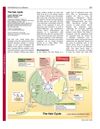
research The hair cycle
The document concludes that the hair cycle is a complex process involving growth, regression, and rest phases, regulated by various molecular signals.
research Molecular Control of Epithelial–Mesenchymal Interactions During Hair Follicle Cycling

research The Biology of Hair Follicles
Hair follicle biology advancements may lead to better hair growth disorder treatments.
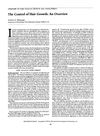
research The control of hair growth: An overview
Hair growth is influenced by interactions between skin layers, growth factors, and hormones, but the exact mechanisms are not fully understood.
Related
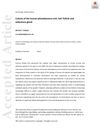
research Culture of the human pilosebaceous unit, hair follicle and sebaceous gland
The article concludes that developing in vitro models for human hair structures is important for research and reducing animal testing, but there are challenges like obtaining suitable samples and the models' limitations.

research Promoting effect of hair follicle stem cells in the wound healing of skin
Hair follicle stem cells help skin wounds heal faster.

research Understanding the functional contribution of dermal stem cells to hair follicle regeneration and skin wound healing
Dermal stem cells help regenerate hair follicles and heal skin wounds.